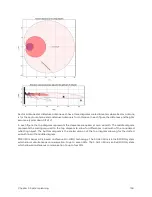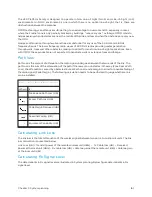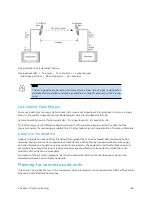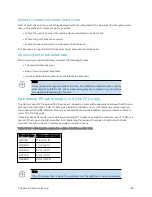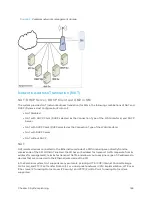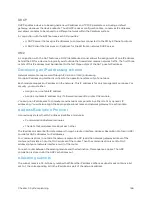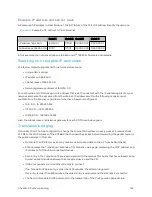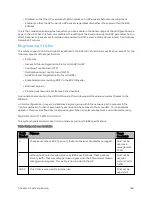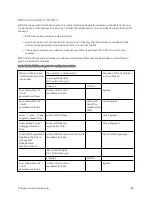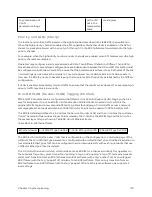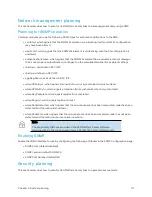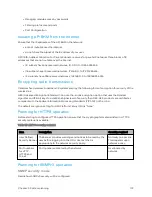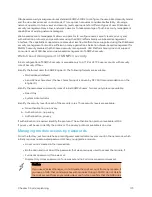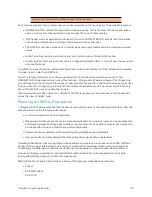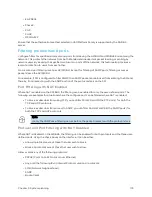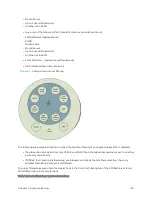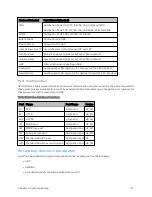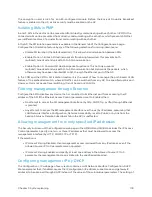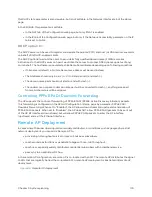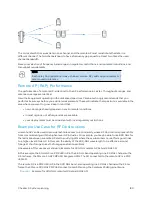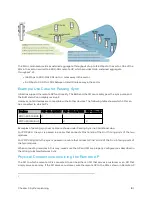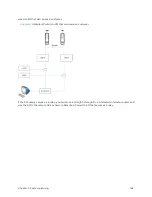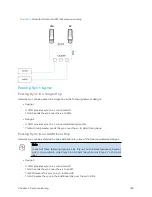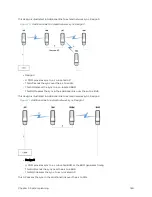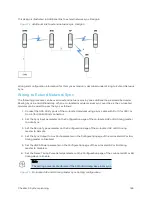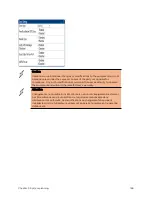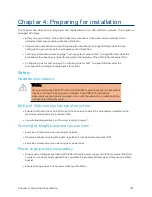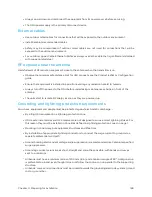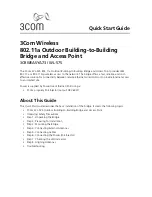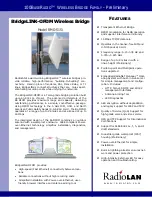
Chapter 3: System planning
173
MIB-based security management uses standard SNMPv3 MIBs to configure the user-based security model
and the view-based access control model. This approach provides considerable flexibility, allowing a
network operator to tailor views and security levels appropriate for different types of user. MIB-based
security management may allow a network operator to take advantage of built-in security management
capabilities of existing network managers.
Web-based security management allows an operator to configure users, security levels, privacy and
authentication protocols, and passphrases using the 450 Platform Family web-based management
interface. The capabilities supported are somewhat less flexible than those supported using the MIB-based
security management but will be sufficient in many applications. Selection of web-based management for
SNMPv3 security disables the MIB-based security management. 450 Platform Family does not support
concurrent use of MIB-based and web-based management of SNMPv3 security.
W eb- based management of SNMPv3 securit y
Initial configuration of SNMPv3 security is available only to HTTP or HTTPS user accounts with security
role of Security Officer.
Identify the format used for SNMP Engine ID. The following formats are available:
l
MAC address (default)
l
5 and 32 hex characters (the hex character input is driven by RFC 3411 recommendations on the
Engine ID)
Identify the usernames and security roles of initial SNMPv3 users. Two security roles are available:
l
Read Only
l
System Administrator
Identify the security level for each of the security roles. Three security levels are available:
a. No authentication, no privacy
b. Authentication, no privacy
c. Authentication, privacy
If authentication is required, identify the protocol. The authentication protocol available is MD5.
If privacy will be used, identify the protocol. The privacy protocol available is cbc-des.
Manag ing m od ule access b y p assw or d s
From the factory, each module has a preconfigured administrator-level account in the name root, which
initially requires no associated password. When you upgrade a module:
l
An account is created in the name admin.
l
Both admin and root inherit the password that was previously used to access the module, if:
o
Full Access password, if one was set.
o
Display-Only Access password, if one was set and no Full Access password was set.
Caution
If you use Wireless Manager, do not delete the root account from any module. If
you use an NMS that communicates with modules through SNMP, do not delete
the root account from any module unless you first can confirm that the NMS does
Summary of Contents for PMP 450 Series
Page 92: ...Chapter 2 System hardware 92 Figure 29 MicroPoP Omni antenna implementation pattern Vertical...
Page 134: ...Chapter 3 System planning 134 Figure 51 Mast or tower installation...
Page 135: ...Chapter 3 System planning 135 Figure 52 Wall installation...
Page 136: ...Chapter 3 System planning 136 Figure 53 Roof installation...
Page 137: ...Chapter 3 System planning 137 Figure 54 GPS receiver wall installation...
Page 158: ...Chapter 3 System planning 158 Figure 61 cnMedusa Antenna...

